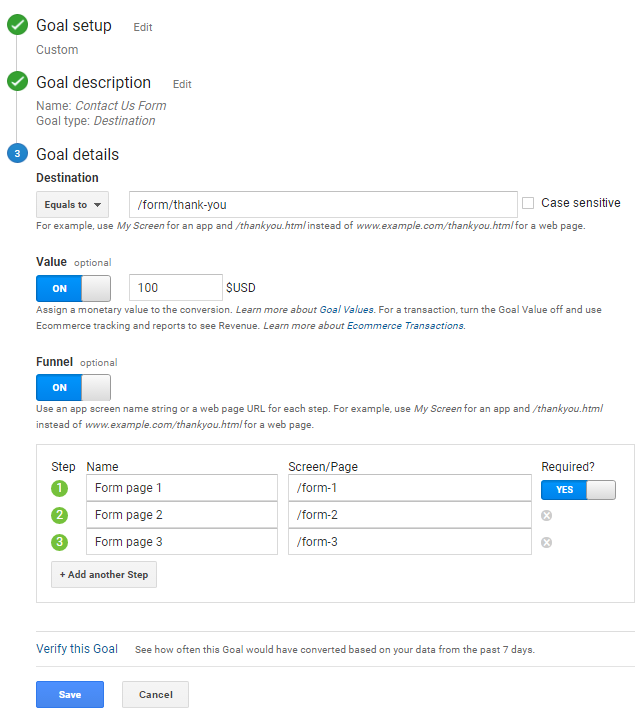What Data Is Google Analytics Goals Unable to Track: Find Out the Limitations
What Data Is Google Analytics Goals Unable to Track: Find Out the Limitations
Blog Article
Introducing the Blind Spots: Comprehending What Google Analytics Goals Can not Determine
In the realm of electronic analytics, Google Analytics stands as a powerful tool for monitoring and analyzing online user interactions. Comprehending what Google Analytics objectives can not gauge is crucial for acquiring an extensive view of user behavior and involvement.
Customer Actions on External Operatings Systems
Comprehending exactly how individuals connect on exterior systems is important for maximizing online techniques. External systems, such as social networks networks, reference sites, and on-line discussion forums, play a significant function in driving traffic to a company's web site. By analyzing individual actions on these platforms, companies can obtain valuable insights into the efficiency of their advertising and marketing initiatives and the choices of their target audience.
One secret element of user habits on exterior platforms is the reference source. By tracking where the users are coming from, companies can recognize which systems are driving the most traffic to their website. This details can aid business allot their sources better, concentrating on the systems that generate the most effective results.

Offline Conversions and Communications
Analyzing customer behavior on external systems supplies beneficial understandings into online approaches; nonetheless, thinking about offline conversions and communications is just as essential for a detailed understanding of a company's general performance. Offline conversions, such as in-store purchases or phone questions, play a significant function in many services' success.

Attribution Beyond Last Click
When diving into the world of electronic advertising and marketing analytics, it becomes vital to look past the solitary touchpoint of the last click for an extra extensive understanding of acknowledgment. While Google Analytics supplies beneficial understandings into customer habits, depending only on last-click acknowledgment can be limiting - what data is google analytics goals unable to track. Acknowledgment versions that exceed the last click use a more nuanced sight of the client trip, taking into consideration all the touchpoints that result in a conversion
Attribution beyond the last click allows marketers to assign credit history to numerous communications along the conversion path, providing a clearer photo of the performance of various advertising and marketing networks. By discovering multi-touch attribution models such as direct, time decay, or position-based acknowledgment, organizations can better assign their advertising spending plans and optimize their strategies for optimal impact.
Understanding the impact of each touchpoint in the conversion process is important for making educated decisions and making best use of ROI. By welcoming attribution beyond the last click, organizations can gain deeper insights right into consumer actions and customize their advertising efforts a lot more successfully.
Cross-Device and Cross-Browser Tracking
Likewise, cross-browser monitoring complements cross-device tracking by catching individual behavior as they switch in between different web internet browsers. Understanding exactly how individuals communicate with websites on different internet browsers can aid online marketers optimize their online experiences to guarantee uniformity and functionality across different systems.
Qualitative Data and Customer Intent
Comprehending individual intent through qualitative data analysis is essential for establishing targeted digital advertising and marketing methods that resonate with the needs and preferences of the target audience. Qualitative information supplies insights right into the 'why' behind user activities, losing light on motivations, feelings, and preferences that quantitative information alone can not record. By evaluating customer comments, remarks, and interactions, marketing professionals can reveal valuable info about individual intent, permitting them to customize their messaging, content, and offerings to better line up with what their target market is seeking.
Qualitative information likewise aids in recognizing the context in which customers involve with a site or application. This contextual understanding allows online marketers to create even more pertinent and individualized experiences, ultimately driving higher interaction and conversion rates. By diving into user intent through qualitative information analysis, businesses can gain a deeper understanding of their target market, resulting in much more efficient advertising and marketing methods that fulfill users' needs and expectations.
Conclusion
To conclude, Google Analytics objectives have restrictions in gauging customer actions on outside systems, offline conversions, attribution past last click, cross-device and pop over to this site cross-browser tracking, and qualitative information connected to user intent. what data is google analytics goals unable to track. It is essential for companies to be knowledgeable about these blind places in order to supplement their information evaluation with various other devices and approaches to obtain a much more comprehensive understanding of their audience and improve their overall digital marketing techniques
By analyzing individual behavior on these systems, companies can get valuable understandings right into the efficiency of their marketing efforts and the preferences of their target audience.
Evaluating customer habits on exterior systems offers beneficial insights into on-line approaches; however, thinking about offline conversions and interactions is just as crucial for a detailed understanding of a firm's total efficiency.In electronic advertising analytics, moving past last-click acknowledgment to discover cross-device and cross-browser tracking is crucial for acquiring a holistic understanding of customer communications throughout various systems and tools. By examining user comments, comments, and communications, marketing professionals can discover important information hop over to these guys regarding individual intent, enabling them to customize their messaging, web content, and offerings to much better straighten with what their target market is seeking.
By diving right into individual intent with qualitative data evaluation, services can acquire a much deeper understanding of their target audience, leading to a lot more effective marketing methods that fulfill customers' assumptions and needs.
Report this page